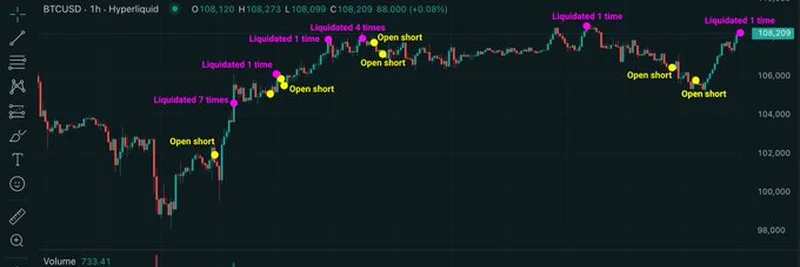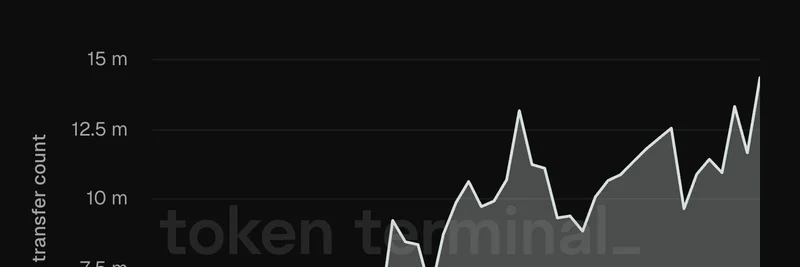If you’ve been keeping an eye on the crypto world, you might have stumbled across a wild story that’s making waves on X. A trader known as @qwatio, dubbed a "gambler" by the blockchain analytics account Lookonchain, recently faced a massive liquidation. We’re talking 282.8 BTC (worth around $30.65 million) and 8,282.8 ETH (about $20.6 million) wiped out in one fell swoop! This isn’t the first time either—@qwatio has been liquidated 15 times on BTC and 8 times on ETH. Let’s break down what happened, why it matters, and what it teaches us about trading in the volatile world of cryptocurrencies.
What Exactly Happened?
The post from Lookonchain, shared on July 2, 2025, comes with some eye-catching charts. The first image shows a BTC-USD trading chart from Hyperliquid, marked with multiple "liquidated" and "open short" points. These annotations highlight where @qwatio’s positions got wiped out as the price soared, likely triggering those liquidations. The second image is a trade history table, showing the nitty-gritty details of these events, including the direction (all shorts), price, size, and trade value.
For those new to crypto trading, "liquidation" happens when a trader’s position is automatically closed by the exchange because the market moves against them, and they can’t cover the losses. In this case, @qwatio was betting big on the price dropping (shorting) with high leverage—borrowing funds to amplify their position. When Bitcoin and Ethereum prices unexpectedly rose, those leveraged bets turned into a multimillion-dollar loss.
The High-Risk, High-Reward Game
Why would someone take such a risky approach? Leverage is the key. It lets traders control large positions with a small amount of their own money, magnifying both profits and losses. @qwatio’s strategy seems to involve shorting the market during dips, hoping for a continued downturn. But as the charts show, the market had other plans, with sudden upward spikes liquidating those positions.
This isn’t just a one-off mistake. The fact that @qwatio has been liquidated 23 times across BTC and ETH suggests a pattern. Some on X speculate this could be a marketing stunt or a whale (a big player) with deep pockets, while others joke about the trader’s endless funds. Regardless, it’s a stark reminder of the double-edged sword of leverage in crypto trading.
Lessons for Crypto Traders
So, what can blockchain enthusiasts and traders learn from this? First, high leverage can be a gamble. While it offers the chance for huge gains, it also opens the door to devastating losses, especially in a market as unpredictable as crypto. Second, timing is everything. Shorting during a dip might seem smart, but if the market reverses, you’re in trouble—especially with maxed-out leverage.
For those looking to dive into trading, platforms like Hyperliquid (where this trade occurred) offer tools to analyze charts and set strategies. But it’s crucial to pair that with risk management—setting stop-losses or avoiding over-leveraging. The crypto community on X is buzzing with reactions, from seasoned traders offering advice to memes poking fun at the situation.
The Bigger Picture for Meme Tokens and Beyond
While this story focuses on BTC and ETH, it’s relevant to the meme token world we cover at Meme Insider. Meme coins like Dogecoin or Shiba Inu often see wild price swings, attracting similar high-risk trading strategies. Understanding liquidations and leverage can help practitioners navigate these markets, whether they’re trading established coins or the latest meme token hype.
As of now (12:50 AM +07 on July 3, 2025), the crypto market continues to evolve, and stories like @qwatio’s keep us on our toes. Whether this trader learns from their losses or keeps rolling the dice, it’s a fascinating case study in the highs and lows of blockchain trading. What do you think—will @qwatio bounce back, or is this the end of the road? Drop your thoughts in the comments!


